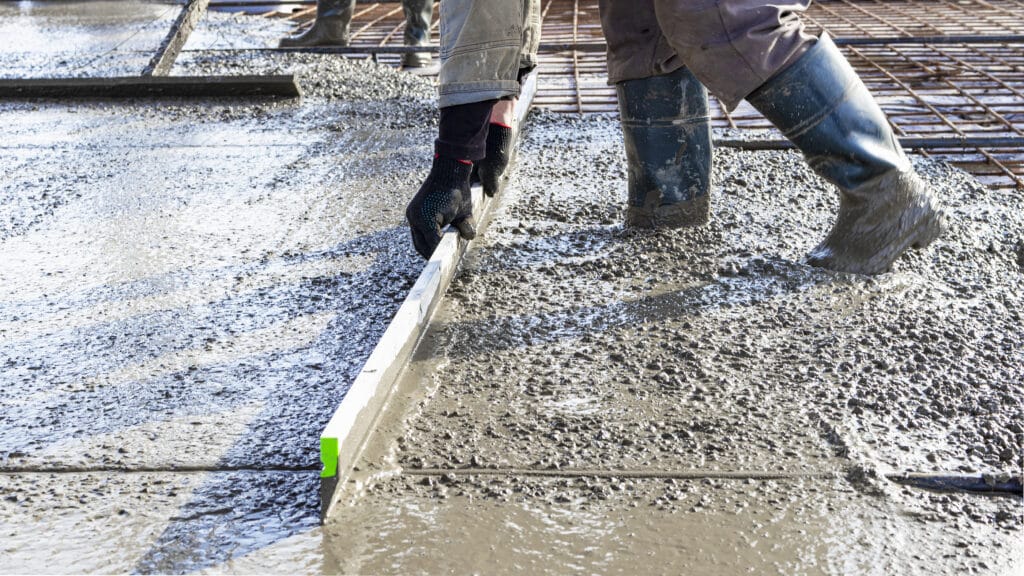Types of Concrete Used in Construction

Concrete slabs Melbourne is used in various construction projects. To produce it, cement, aggregates and water must be mixed in precise proportions in an exacting process that creates strong yet resilient building material.
Certain varieties of concrete are more specialised than others. For instance, high density concrete is often employed in structures like nuclear power plants to block harmful radiations from passing through walls and into nearby rooms. Furthermore, this special form may contain barytes or iron to further increase density.
Normal Strength Concrete
Normal strength concrete is a popular mix for use in buildings, roads and pavements, boasting high compressive strength but low tensile strength. This type of mix has proven its worth time after time.
Roller compacted concrete, also referred to as roller compacted slab, is formed by substituting some of the cement content with fly ash and placing it beneath large hydraulic rollers used in earthmoving or paving work in order to form a dense and strong monolithic block – perfect for highways or airport runways as it can withstand heavy traffic volumes.
This concrete is lighter and lower-density than regular concrete, yet less durable against freezing and thawing. Often mixed with lower water cement ratio and finer aggregates, as well as super plasticizers or silica fume for additional strength, it is an ideal way to reduce weight of structures while meeting architectural considerations for elements carrying lighter loads; also mixed with materials like recycled glass gives this concrete its aesthetic appeal.
Plain Concrete
Concrete is the go-to building material in many structures because of its hard, chemically inert surface composed of aggregate (usually sand and gravel) bound together by cement, making it highly adaptable and structurally sound. Furthermore, its composition doesn’t produce harmful emissions or promote mildew growth – plus its impervious nature to water makes it the go-to choice.
Plain concrete offers high compressive strength but limited tensile strength, so it must often be reinforced using materials with greater tension strength, such as steel rebar. Plain concrete can be formulated to possess various physical and mechanical properties depending on its mix of cements and aggregates, depending on which ratios work best.
Cement is the primary binder used in plain concrete and may be made of limestone, chalk, clay or gypsum; Portland cement is more frequently used. Other binders may also be utilized, including bitumen in asphalt concrete applications or polymer concrete that uses plastic molecules as binder.
Reinforced Concrete
Concrete structures require steel reinforcement in order to achieve high tensile strengths. While compression strength is very strong, its weakness lies in bending. Welded wire mesh reinforcement can add the necessary tensile strength with less time and labor required; other forms such as PC strand are also employed for adding this property.
Concrete’s core ingredients include cement, sand and coarse aggregates designed for your desired mix – mixed together in an automated concrete mixer with water.
Additives added to concrete are used to improve its workability, durability and other properties. Examples of such additives are fly ash, GGBFS (ground granulated blast furnace slag), waste glass or ground vehicle tires. Concrete can be formed into any desired shape without fear of fire or weather damage and requires prolonged curing times for maximum strength development; however this timetable can be shortened through appropriate admixtures.
Precast Concrete
Precast Concrete can be found in many construction projects, from structural frames and walls to cladding or free-standing walls. Precast elements are typically manufactured at a supplier’s factory before being transported directly to project sites, which helps speed up on-site construction time while increasing quality control standards of finished product.
Precast concrete can be cast in various colors, textures and shapes to give your building its own distinct appearance while adding functionality. You may also include waterproofing admixtures in the mix that help prevent water damage to help protect its structure from being compromised by leakages or flooding.
Precast concrete can be easily formed into utility panels like meter boxes, light pole bases, hand holds, pull boxes, panel vaults and telecommunication structures using molds. This reduces the frequency with which electricians or plumbers visit the construction site to work on utility services like these panels; additionally, its thermal efficiency offers many advantages – being denser and less of a heat conductor can lower peak heating and cooling loads significantly.
